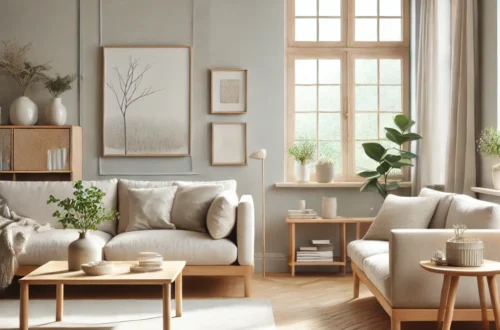
Danish Design and How It Shapes Modern Living
Danish design is more than just a style—it’s a philosophy rooted in functionality, simplicity, and beauty. Renowned globally for its innovative approach, Danish design has shaped the way we think about interiors, furniture, and even lifestyle. But what makes it so special?
In this article, we’ll delve into the key principles of Danish design, explore its cultural roots, and highlight how you can incorporate its timeless aesthetic into your modern living space.
A Brief History of Danish Design
Danish design’s golden age emerged in the mid-20th century, during the Scandinavian modern movement. Designers like Arne Jacobsen, Hans Wegner, and Finn Juhl created iconic pieces that seamlessly blended form and function. These pioneers believed that good design should improve people’s daily lives without unnecessary complexity.
This movement wasn’t just about aesthetics—it was a response to Denmark’s cultural values. In a country that prioritizes equality, simplicity, and quality, design became a way to reflect these ideals in everyday objects. Danish design continues to evolve, but its roots remain firmly planted in these principles.
The Core Principles of Danish Design
- Functionality First:
Every piece of Danish design serves a purpose. Whether it’s a chair, lamp, or table, the design is meant to solve a problem or improve the user’s experience. A Danish chair isn’t just beautiful—it’s also ergonomic, durable, and practical. - Simplicity and Minimalism:
Danish design is often described as “understated elegance.” It avoids ornamentation and excess, focusing on clean lines and thoughtful proportions. This simplicity ensures that pieces remain timeless, fitting seamlessly into any environment. - Natural Materials:
Danish designers favor organic materials like wood, leather, and wool. These materials are not only durable but also create a warm, inviting atmosphere. Light woods like oak and teak are particularly popular, reflecting Denmark’s connection to nature. - High-Quality Craftsmanship:
Danish design values quality over quantity. Pieces are built to last, with an emphasis on sustainability and longevity. This commitment to craftsmanship is why so many Danish designs have become heirlooms passed down through generations. - Human-Centered Approach:
Danish design prioritizes the user’s experience. Furniture is designed to be comfortable and intuitive, with a focus on how people interact with their surroundings. This human-centered approach makes Danish design feel personal and approachable.
Iconic Danish Design Pieces
If you’re new to Danish design, here are a few iconic pieces that embody its philosophy:
- The Egg Chair by Arne Jacobsen: A sculptural, cocoon-like chair that’s as functional as it is beautiful.
- The Wishbone Chair by Hans Wegner: Known for its simple elegance and natural materials, this chair is a staple of Danish interiors.
- PH Lamps by Poul Henningsen: These lamps are designed to create glare-free, soft lighting, enhancing the atmosphere of any room.
- Kaare Klint’s Safari Chair: A lightweight, portable chair with a timeless design inspired by travel and adventure.
These pieces have stood the test of time because they balance practicality with beauty.
How to Bring Danish Design Into Your Home
- Invest in Timeless Furniture:
Start with one or two high-quality pieces, like a sleek Danish dining table or a minimalist lounge chair. Look for designs with clean lines and neutral tones to anchor your space. - Use Natural Textures:
Incorporate wood, wool, and leather to add warmth and texture. Consider a light wood coffee table paired with a soft wool rug for a balanced look. - Prioritize Lighting:
Good lighting is a cornerstone of Danish design. Opt for lamps with adjustable settings and simple designs, like a PH lamp or an understated pendant light. - Keep It Functional:
Avoid clutter and focus on pieces that serve a purpose. A minimalist bookshelf, for example, can act as both storage and a design feature. - Create a Cozy Atmosphere:
Even with its emphasis on minimalism, Danish design never feels cold. Add personal touches like cushions, art, or a cozy blanket to make the space inviting.
Danish Design in the Modern World
Today, Danish design continues to influence global trends, from sustainable architecture to tech gadgets. Its emphasis on simplicity and functionality has inspired countless industries, proving that good design is timeless.
Whether you’re decorating a small apartment or a sprawling house, Danish design offers a versatile and approachable way to create a space that feels balanced, intentional, and beautiful.




